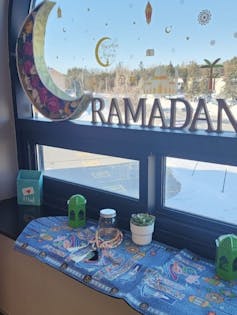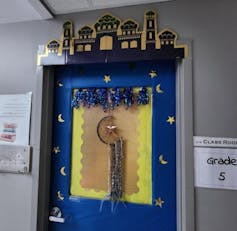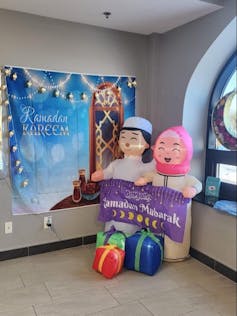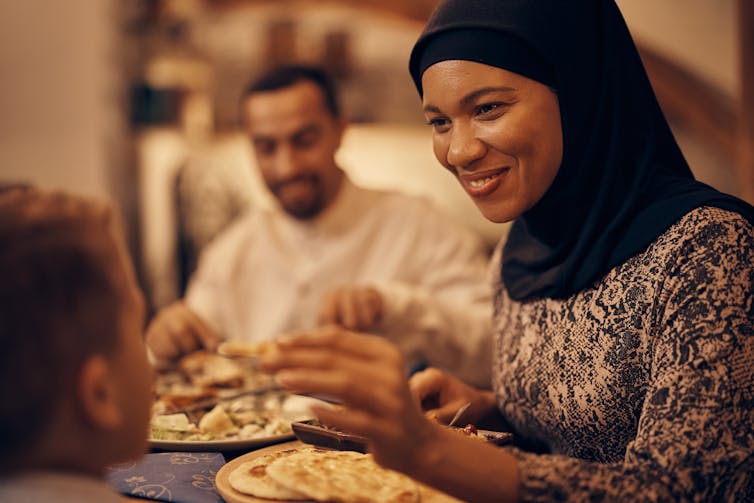4 ways schools can bring Ramadan into the classroom
As Muslims begin observing Ramadan, it’s a good time to consider the importance of building a strong sense of belonging at school. Affirming the identities of Muslim students and all minoritized and racialized learners is a way of creating a positive classroom culture.
Fostering opportunities to understand inequities, going beyond stories of racism and spotlighting greatness and achievement all matter.
Over the last 10 years, I have led workshops on Ramadan, Muslims and Islamophobia with district school boards, at universities and at community events.
Need to educate against Islamophobia
In the past two years, I have received a considerable number of requests for workshops and presentations. Unfortunately, I believe, it took the death
of four members of a Muslim family in London, Ont., in a “premeditated” vehicle attack in June 2021, for significant strides to be taken to educate Canadians about Islam and Muslims, and to substantiate that Islamophobia or anti-Muslim sentiments are real.
School boards have started to pay more attention to their Muslim students’ identities, and also to the existence of strong explicit and implicit anti-Muslim biases among students and teachers.
Muslim youth need spaces in their communities, including their schools, where they are free to be themselves and do not have to worry about facing prejudice. Youth need their schools to be safe havens to build their positive sense of self.
Growing Muslim population
Ramadan classroom window decor from Tarbiyah Learning Academy, an Islamic school in Ottawa.
(Tarbiyah Academy), Author provided
Even though Muslims are the fastest-growing religious group in Canada, a recent study from the Angus Reid Institute found “unfavourable views of Islam prevalent across the country.” Results were based on a February 2023 online survey among a representative randomized sample of 1,623 Canadian adults.
In 2021, Islam was reported as the second-largest religion in Canada. In the past 20 years, the Muslim population of Canada has more than doubled, from two per cent in 2001 to 4.9 per cent in 2021, now totalling nearly 1.8 million Muslims.
Identity-affirming activities
In Ontario, Muslim students account for over 20 per cent of the student body in some school boards. The Peel District School Board has the highest concentration of Muslim students in the province.
And yet, as a parent with a child in a Peel daycare, I’ve noticed sparse identity-affirming activities offered in classrooms. This is in contrast to festivities during Christmas, Valentine’s Day and Halloween, such as wearing different colour outfits to commemorate the day and lots of arts and crafts.
When this is the case, Muslim children’s non-Muslim counterparts are not engaged in challenging their Islamophobic perceptions.
I am not saying that such inclusive diversity-related practices should become an equity detour or a replacement for confronting inequities and anti-Muslim sentiments. Affrming cultural activities are merely entry points to help schools start the ideological work required to combat Islamophobia.
Inclusive public school education
Students need to see their identities and cultures recognized at school.
(Tarbiyah Academy), Author provided
Research from 2012 in the United States found that the lack of identity-building in public schools is one of the reasons for a rise of Islamic schools.
Holidays (days away from school) also coincide with Christian festivities. Such inequitable practices exclude all other cultures and traditions.
In the U.S., more and more districts are including Muslim holidays in their school calendar.
Team approach needed
In Canada, should Muslim students attend Islamic schools to experience the spirit of Ramadan and Eid?
I am a proponent of public schools, and I believe public schools can be spaces for all students from all cultures and backgrounds to feel a deep sense of belonging.
Cross-cultural exchange can be complex and challenging for teachers. Building a positive school culture, especially around celebrations, needs to be a team effort by all educational partners: teachers, administrators, parents, students and community members.
Here are four ways educators in public schools can develop the identities of Muslim students and create a positive school culture during Ramadan:
1. Help students feel the spirit of Ramadan in their public schools.
Ramadan decorations can help lift the spirits of Muslim students during the month of fasting.
(Shutterstock)
Classroom or hallway decorations, and Ramadan songs in the announcements, can help lift the spirits of Muslim students during the month-long fast.
Decorations of the crescent moon can work as a culturally appropriate decoration in public schools: it signifies the beginning of a month in the Islamic lunar calendar. Lanterns are another example. In Muslim-majority countries, lanterns are hung from windows, balconies and in public spaces and create a magical milieu. Music can provide positive transcultural learning.
Lantern decorations and crafts are one idea for schools.
(Shutterstock)
Educators can also use the language of a student’s culture to greet them on the day of their celebration. Studies suggest using a student’s home language provides a deeper connection between students and their school experience.
For example, educators could say:
“Salam [student name], Ramadan Mubarak.”
It means: “Hello … Happy Ramadan,” in Arabic. Salam means “peace” and is used as a greeting by many Muslims even in non-Arabic speaking countries. Learning the specific greetings used in students’ cultures would be a good idea.
Another way to ignite the Ramadan spirit is to enlist the help of Muslim parents, or partner with local mosques, to create loot bags filled with inexpensive items children might receive at a birthday party. These could be for Muslim students (and also non-Muslims who would like one).
This activity would also enhance Muslim school-community engagement. Schools could explore the best way to offset costs to ensure this is accessible to families.
Connecting with local Islamic schools could be another potential partnership.
Read more:
If I could change one thing in education: Community-school partnerships would be top priority
2. Provide spaces for students during lunch and recess. Fasting can be difficult for most kids, and doing it alone while they see other friends eating can make it more challenging.
One school in London, Ont. made a fasting club and attracted 15 students to provide camaraderie, and offered activities to help students keep their minds off hunger.
Read more:
Explainer: what is Ramadan and why does it require Muslims to fast?
3. Send a letter to the school community about Ramadan.
Informing parents of the day-to-day activities of the school, especially those pertinent to minoritized or racialized families, may increase the likelihood of parental engagement.
Informing a school community about Ramadan can promote inclusivity.
(Tarbiyah Academy), Author provided
A school in Milton, Ont. sent a letter to parents last year informing them about Ramadan and the celebration that follows it: Eid.
A parent shared this letter with me in appreciation of the school’s work affirming Muslim identities and creating intercultural understanding.
4. Holding Fast-a-thons: Fast-a-Thons offer opportunities for non-Muslims to experience Ramadan with Muslim friends or colleagues, and are typically planned around sharing iftars — the meal eaten after sunset during Ramadan.
Community iftars where Muslim and non-Muslims break their fast together instils a feeling of camaraderie and overcoming a challenge collectively. Muslim students and their parents can be invited to speak about what Ramadan means to them.
Muslims can be invited to speak about what Ramadan means to them.
(Shutterstock)
Granted, the lack of intercultural understanding is not always the root of Islamophobia.
Islam and Ramadan awareness may not stop anti-Muslim sentiments for some, however, these are stepping stones to starting deeper conversations and connections.
No Byline Policy
Editorial Guidelines
Corrections Policy
Source





